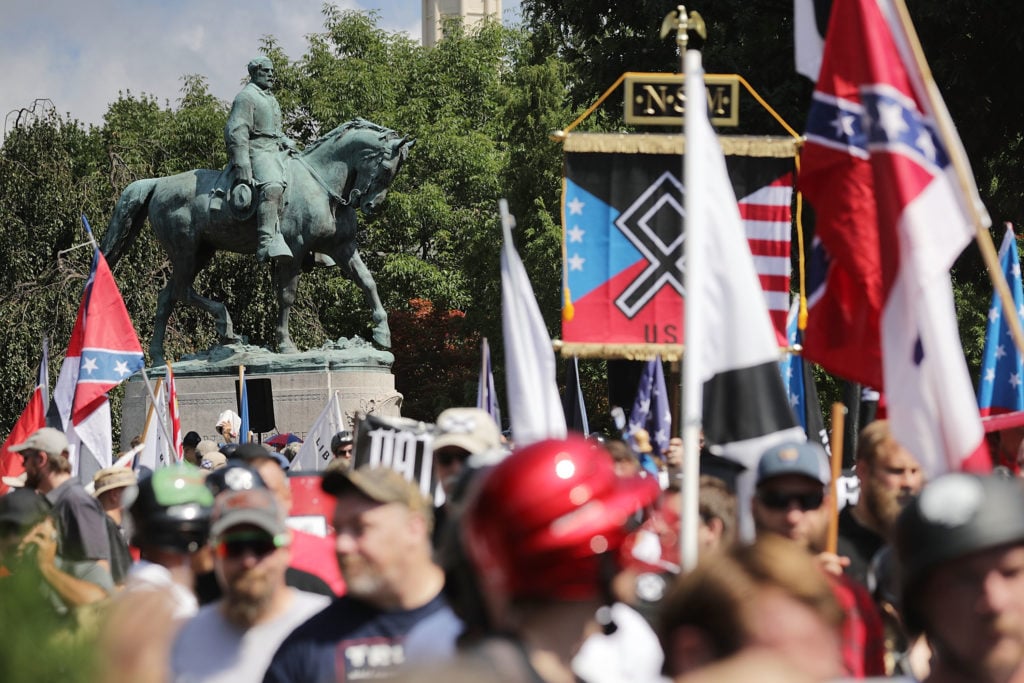Politics
Nearly 50 Confederate Monuments Have Been Removed Since 2015, Says a New Report
But another 772 remain, according to the Southern Poverty Law Center.

But another 772 remain, according to the Southern Poverty Law Center.

Sarah Cascone

How much progress has been made in the effort to rid the US of symbols that honor the Confederacy? Since 2015, 47 monuments have been taken down, including prominent statues of Confederate leaders Robert E. Lee, Jefferson Davis, and P.G.T. Beauregard, according to the Southern Poverty Law Center’s new report “Whose Heritage? Public Symbols of the Confederacy.”
But there are another 772 monuments ripe for removal, it says. The report, which updates an earlier study from 2016, looks to identify monuments, civic names, and other markers that commemorate leaders of the Confederacy at US schools, bodies of water, buildings, statues, and public holidays, among other sites. Altogether, only 110 symbols of the Confederacy have been removed since 2015, compared to 1,728 that remain.
The data in the report are broken down by the type of symbol, its location, and the Confederate figure being honored. By state, Virginia was the worst offender, with 242 markers honoring the Confederacy. Texas came in second with 209, but had since removed more than twice as many as Virginia, at 31 to 14. (Texas rechristened 20 public schools that previously bore the names of Confederate leaders. One hundred others still exist nationwide.)
“These tributes are living symbols of white supremacy,” said the Southern Poverty Law Center in a statement. “They’re part of a 150-year propaganda campaign to revise history—to mythologize the ‘Lost Cause’ as a noble endeavor and to paint over the torture, murder, and enslavement of millions of African Americans.” (Most of these symbols, it is worth noting, were not created until decades after the war, during Reconstruction and the Civil Rights movement, as a means of reinforcing Jim Crow laws.)
The most prominent of these symbols are the monuments, which have come under widespread criticism since Dylann Roof murdered nine African-American church goers in South Carolina in 2015. (Roof had been photographed with Confederate paraphernalia.) Prior to that racially motivated attack, the report’s data shows, Confederate symbols were rarely removed or renamed.
Then came amid a rise in the racist ideology of the “alt-right,” a group defined largely by its white nationalist views. Alt-right activists have staged “hundreds of rallies across the country to protest monument removals,” the report says. “We saw a dramatic display of their anger last August when hundreds of racists marched with torches and shouted Nazi slogans in Charlottesville, Virginia,” an event that led to the death of a young counter-protester, Heather Heyer.

The statue of Confederate General Robert E. Lee stands behind a crowd of white nationalists during the “Unite the Right” rally on August 12, 2017, in Charlottesville, Virginia. Photo by Chip Somodevilla/Getty Images.
“We encourage communities across the country to reflect on the true meaning of these symbols,” the Southern Poverty Law Center writes, “and ask the question: Whose heritage do they truly represent?”